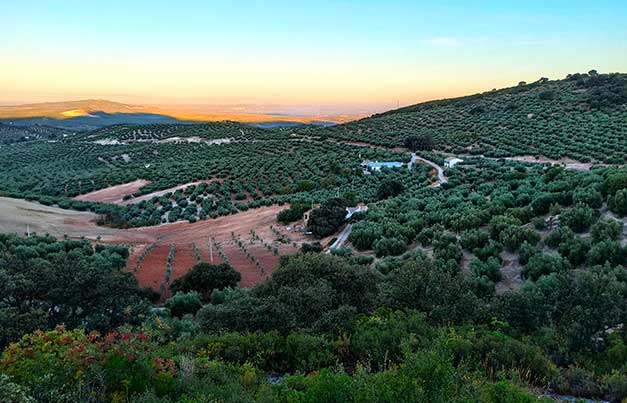Knowledge base
Conversion of Traditional Olive Groves
We understand traditional olive groves as those constituted by centuries-old olive trees, spaced widely apart in expansive exploitation patterns, ranging from 9x9 to 14x14. In numerous seminars and congresses related to olive groves and olive oil, the conclusion of many experts in this sector is always the same: "Traditional olive groves must be transformed." This conclusion is reached by acknowledging that the future of the sector lies in maximum mechanization. We must not forget that the serious problem with traditional olive groves is the low or nonexistent profitability in a market with low olive oil prices.
In this way, the reconversion must be approached as a goal
to make the olive grove mechanizable, increase production, and maximize profit
through cost reduction. To achieve this, we begin by acknowledging a series of
premises:
- We
know that the best reconversion for a traditional olive grove with wide
spacing is to remove them and replace it with an intensive olive grove
that, with proper care, will provide us with the same or even more
production than the traditional one in 7-8 years, with annual increases
until reaching its maximum leaf volume.
- We
know that not all farmers can carry out this type of transformation due to
various reasons, especially economic ones due to the total loss of
production for several years.
- We
know that planting new single-stem olive trees among existing multi-stem
olive trees faces greater challenges in development due to various
reasons, especially due to competition for water and light.
With this in mind, this article proposes a reconversion of
the traditional olive grove for planting frames of 12x12 m with 69 trees/ha, or
14x14 m with 51 trees/ha. We are referring to all olive trees with 3-4 stems or
trunks, with the idea of transforming them into frames of 12x6 with 139
trees/ha and 7x7 with 204 trees/ha, respectively, with single-stem olive trees,
and enabling mechanized harvesting using an inverted umbrella shaker. While we
recognize that this system is not ideal, it minimizes the loss of production
during the reconversion process, significantly reduces production costs, and
increases production once the reconversion process is completed. In this
regard, we propose a progressive transformation over a period of 8-10 years.
The steps to follow are as follows:
- Determine the spacing of the olive grove to be converted. This can be known by measuring with a measuring tape (more accurate) or using an aerial photo from the Google Earth application (which can be done on the same plot screen). In photo #1, two rows of crossed olive trees have been measured, one measuring 177 m and divided by the number of gaps, 14, resulting in a measurement of 12.6 m. The other crossed row measures 95.6 m with 8 gaps, resulting in 11.9 m. The spacing of the plot in the photo is 12x12. The advantage of the aerial photo is that it allows the spacing to be calculated and the density increase to be replanned on the photo without having to visit the plot.
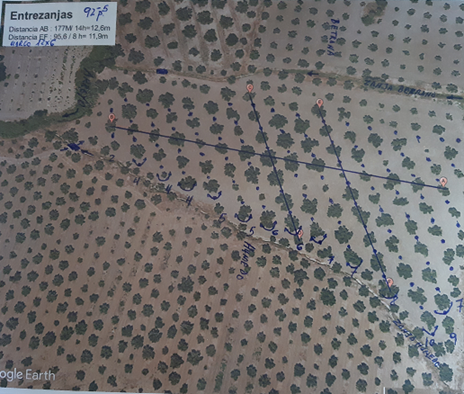
Photo 1: Calculation of the spacing of a plot using the
aerial photo from the Google Earth application. (PHOTO: Valencian Institute of
Agricultural Research).
- In
the replanting of new olive trees, it is necessary to define:
· The main working aisle, which should be perpendicular to
the slope of the plot. In the case of the conversion from 12x12 to 12x6, the
main aisle will be 12 meters.
· The movement of machinery, especially the turns at the end
of the row of olive trees, to minimize invasions and disturbances to the
neighboring property.
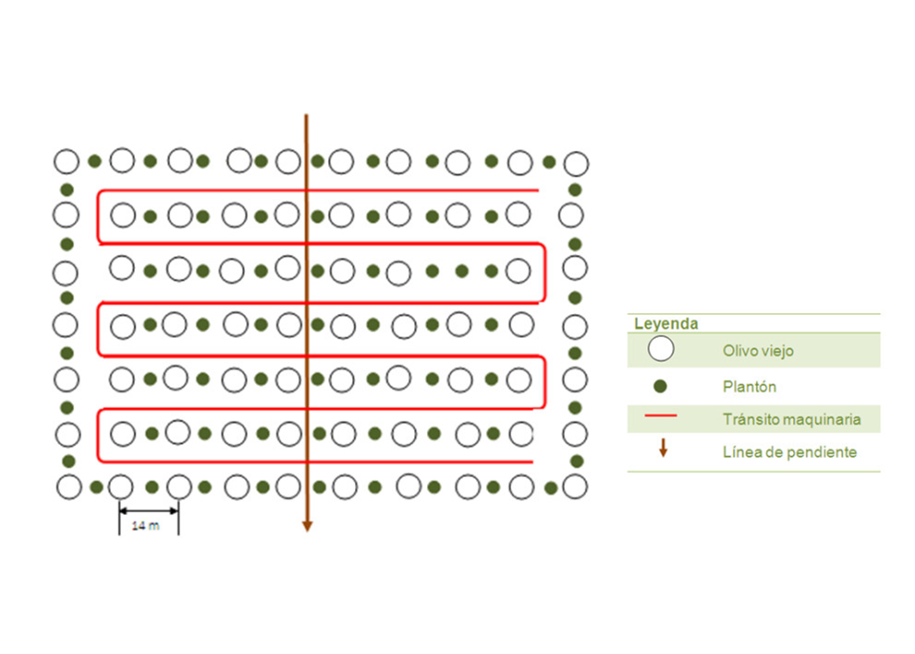
F-2 Theoretical Design of a Conversion. (PHOTO: Valencian
Institute of Agricultural Research).
- Determine
the centers of the rows by measuring from the center of the trees and mark
a reference at the start and end of each row, which will serve as a guide
for subsoiling the center of the row. Once the subsoiling is done, proceed
to use a rake to smooth the terrain and break up clumps.
- Mark
the positions of the olive trees to be planted and dig the planting holes.
- Use
paint to mark the selected live trunk or base of life that will remain on
each tree from the traditional olive grove. This choice is made based on
its potential future mechanization. Factors considered include height,
slimness, diameter, and trunk health. Within this selection, there may be
olive trees that won't undergo conversion and their only solution will be
uprooting.
- Initiate
pruning or cutting with the goal of promoting the development of the live
trunk, encouraging the growth of shoots or suckers towards the empty space
in the central zone of the olive tree. Annual cleaning of the head of the
trunk or live trunk is recommended, selecting the best-oriented shoots and
removing any obstacles that hinder their proper growth from the vegetation
of other trunks. Ideally, this pruning or cutting system should start a
few years before trunk cuts and planting. The aim of pruning and cutting
is for the live trunk to have 4-5 branches around the head of the trunk,
with angles of approximately 60 degrees to the horizontal. This is
achieved through successive prunings. In the traditional pruning of an
olive tree with multiple trunks, preference is given to olive trees with
compact growth that facilitate harvesting, with branches that are not very
vertical, and sometimes nearly horizontal. Occasionally, some branches may
reach the center of the rows, and low-hanging branch remnants may be left very
close to the ground. With mechanization using an inverted umbrella
vibrator, pruning changes. Slim branches (60 degrees to the horizontal
axis) are sought, as they vibrate better, visible trunks to aid the
attachment of the vibrating clamp, and low-hanging lateral branches at a
certain height so they do not touch the inverted umbrella, as any branch
that touches the umbrella's folds does not vibrate. For harvesting with an
inverted umbrella vibrator, olive trees need taller canopy heights, with a
maximum canopy diameter limited to the umbrella diameter, and lower
branches must be maintained at a greater height from the ground. For
harvesting with an inverted umbrella vibrator, the pruning systems for
formation, maintenance, and renewal differ from the conventional
multi-trunk olive grove. In formation pruning, the cut is made above the
sap vein to induce shoot regrowth in appropriate areas and topping to
reduce vigor.
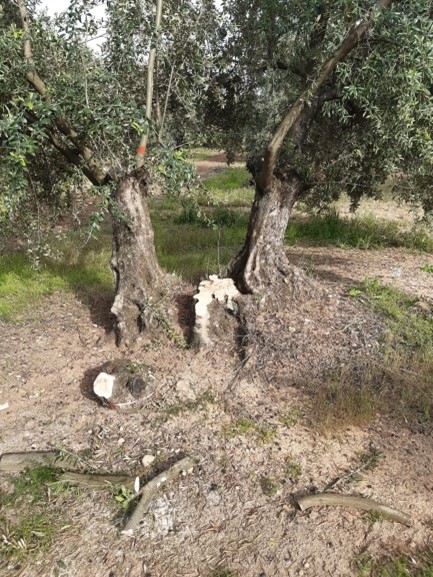
The photo shows the live trunk marked in red (left), with a deformative pruning already initiated on the live trunk. We can also see that the other existing trunk has undergone conventional pruning, aiming not to hinder the vegetative growth of the main trunk. In this olive tree, the process of removing trunks or bases has already begun.
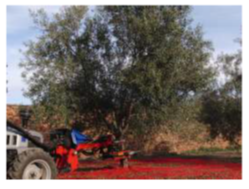
F-3: Note the slender (60º) insertion of the main branches suitable for proper vibration transmission
(PHOTO: Valencian Institute of Agricultural Research)
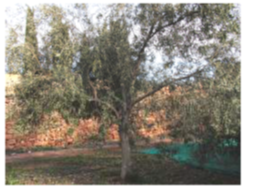
F-4: Tree with some branches inserted at too wide an angle that do not transmit vibration well
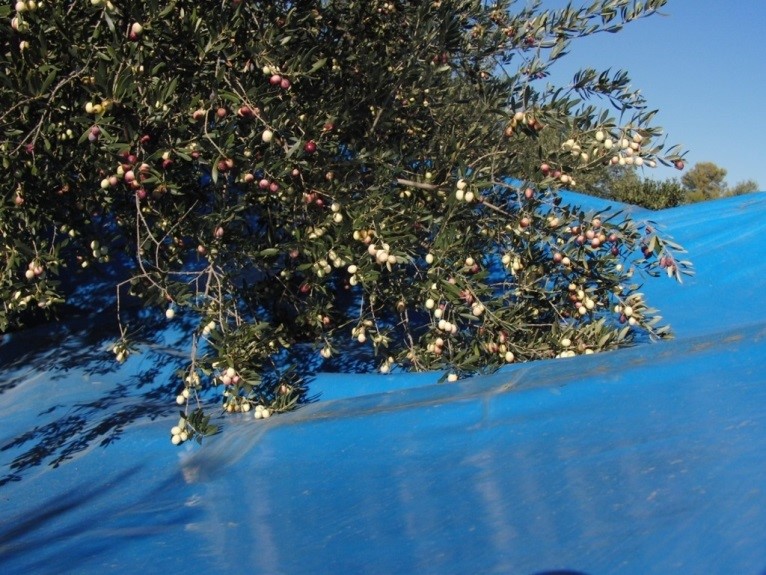
F-5: Branch resting on the canvas that prevents good vibration transmission
Details of the conversion of an olive grove 12x12
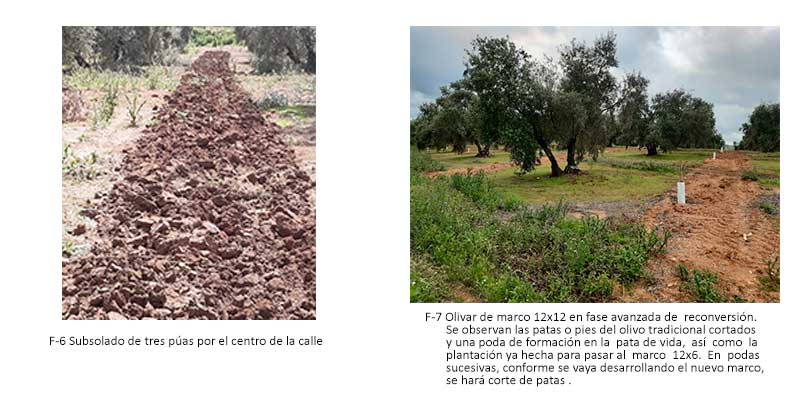

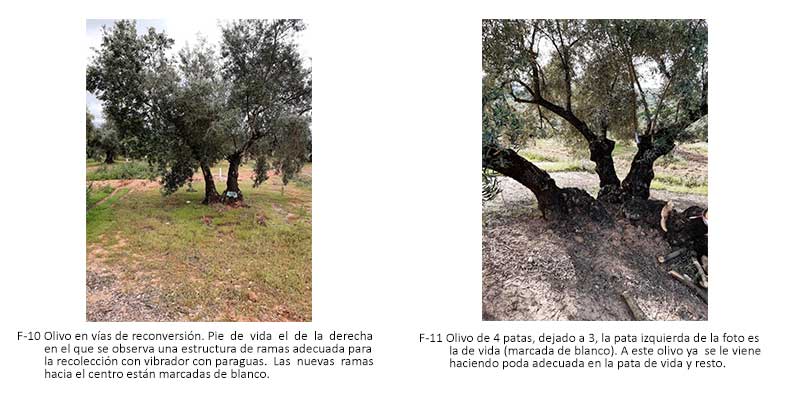
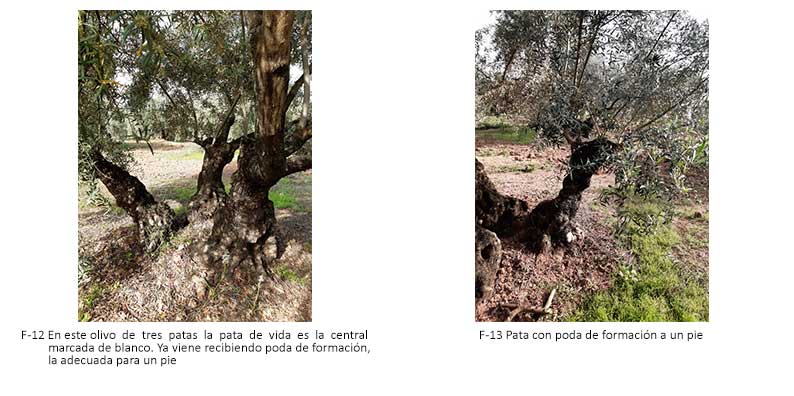
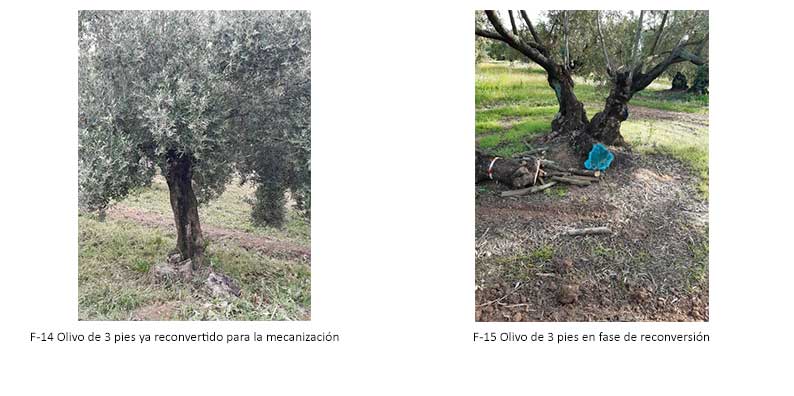
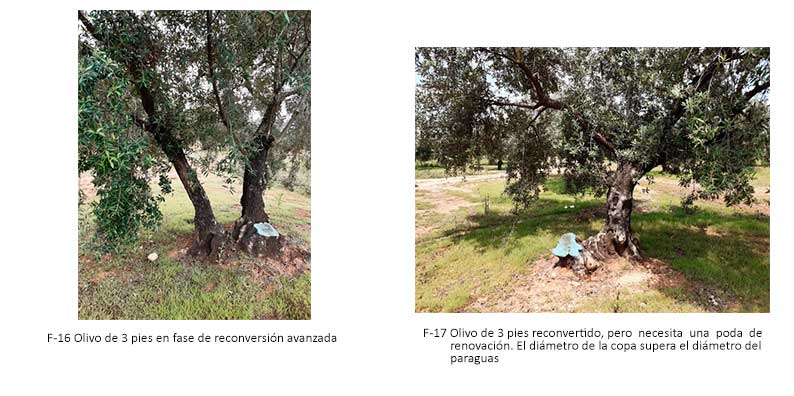
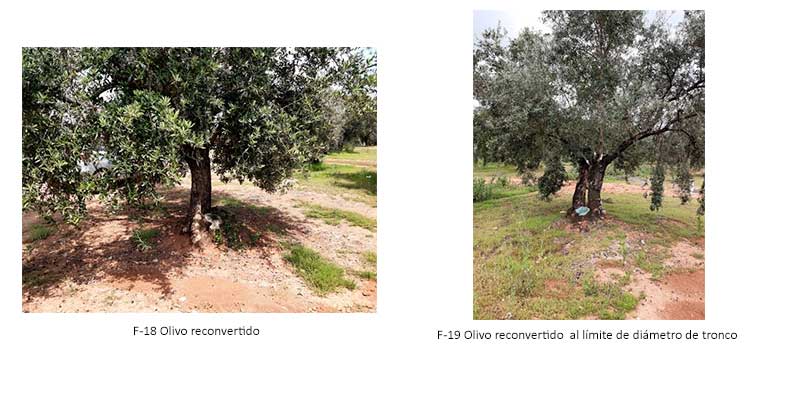
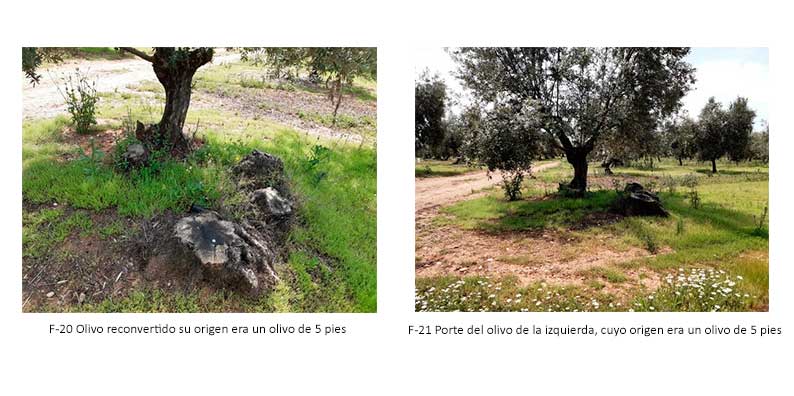
During this conversion, many of the live trunks are not
entirely straight. It's common for them to be somewhat tilted. In others, the
canopy volume is off-center in relation to the trunk axis. All these inevitable
imperfections in this type of conversion influence the quality of shaking and
gradually correct themselves naturally with proper pruning. It's crucial that
pruning practices are controlled and guided by the person conducting the
conversion, who must have a clear understanding of what they want to achieve
and must do.
